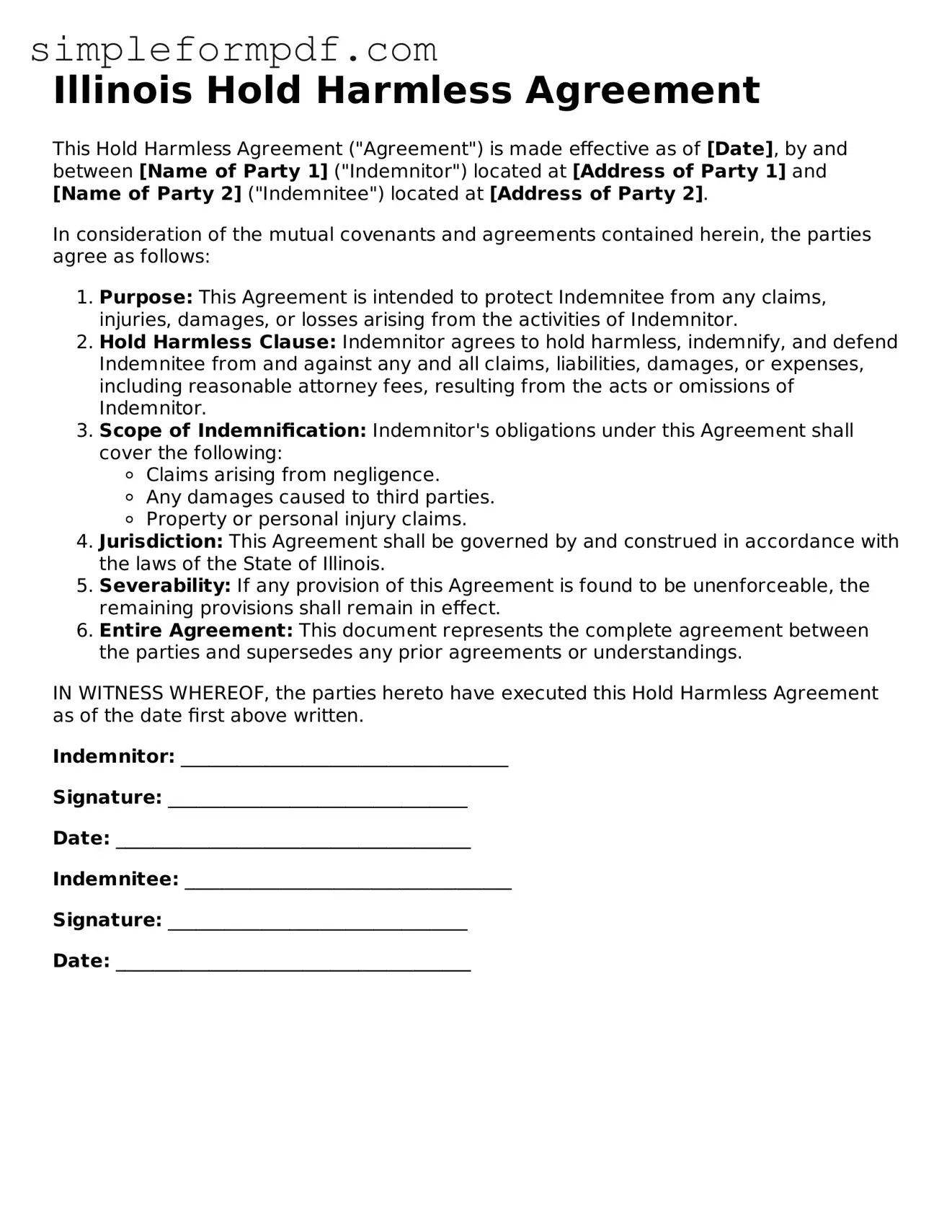Illinois Hold Harmless Agreement
This Hold Harmless Agreement ("Agreement") is made effective as of [Date], by and between [Name of Party 1] ("Indemnitor") located at [Address of Party 1] and [Name of Party 2] ("Indemnitee") located at [Address of Party 2].
In consideration of the mutual covenants and agreements contained herein, the parties agree as follows:
- Purpose: This Agreement is intended to protect Indemnitee from any claims, injuries, damages, or losses arising from the activities of Indemnitor.
- Hold Harmless Clause: Indemnitor agrees to hold harmless, indemnify, and defend Indemnitee from and against any and all claims, liabilities, damages, or expenses, including reasonable attorney fees, resulting from the acts or omissions of Indemnitor.
- Scope of Indemnification: Indemnitor's obligations under this Agreement shall cover the following:
- Claims arising from negligence.
- Any damages caused to third parties.
- Property or personal injury claims.
- Jurisdiction: This Agreement shall be governed by and construed in accordance with the laws of the State of Illinois.
- Severability: If any provision of this Agreement is found to be unenforceable, the remaining provisions shall remain in effect.
- Entire Agreement: This document represents the complete agreement between the parties and supersedes any prior agreements or understandings.
IN WITNESS WHEREOF, the parties hereto have executed this Hold Harmless Agreement as of the date first above written.
Indemnitor: ___________________________________
Signature: ________________________________
Date: ______________________________________
Indemnitee: ___________________________________
Signature: ________________________________
Date: ______________________________________
